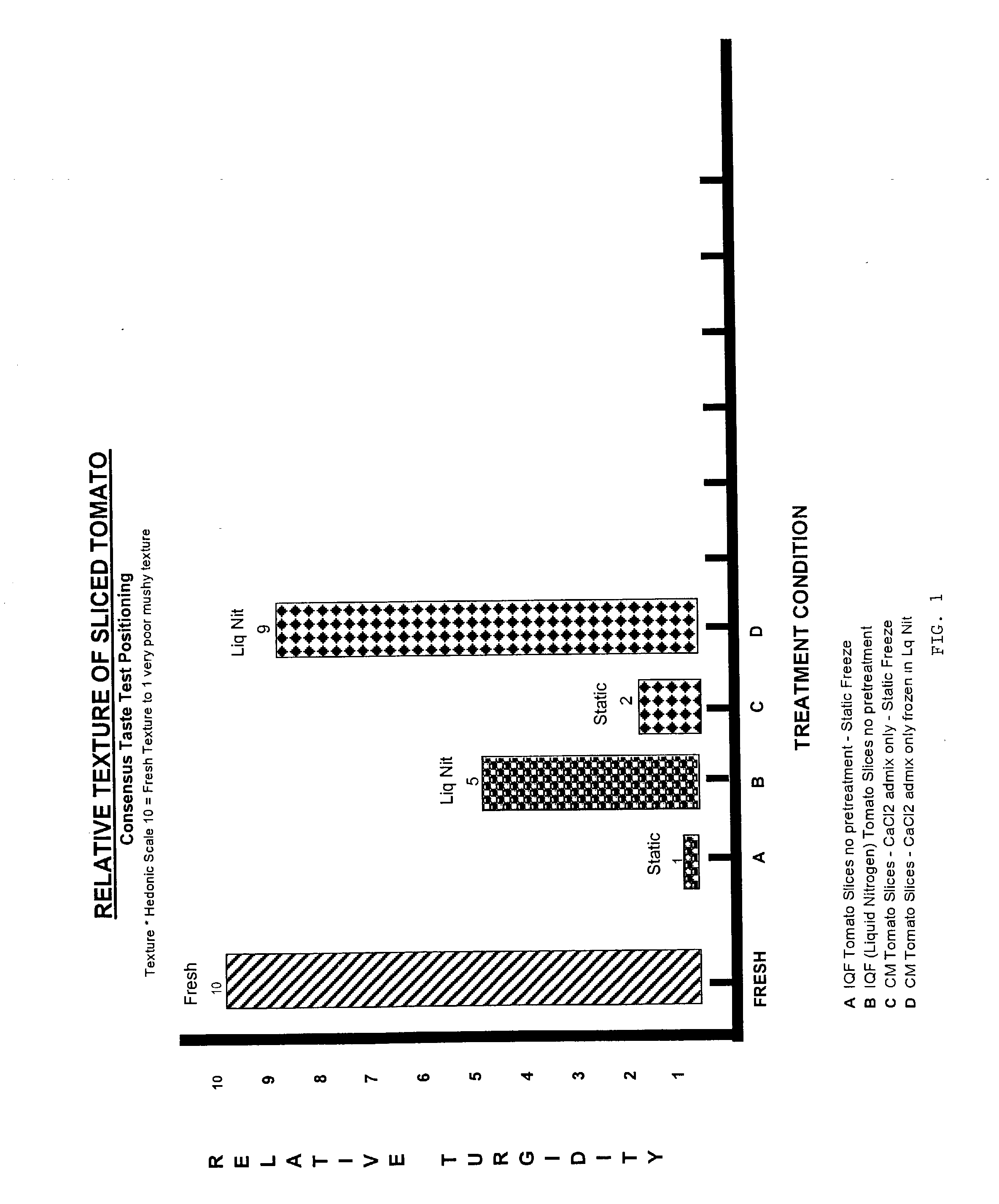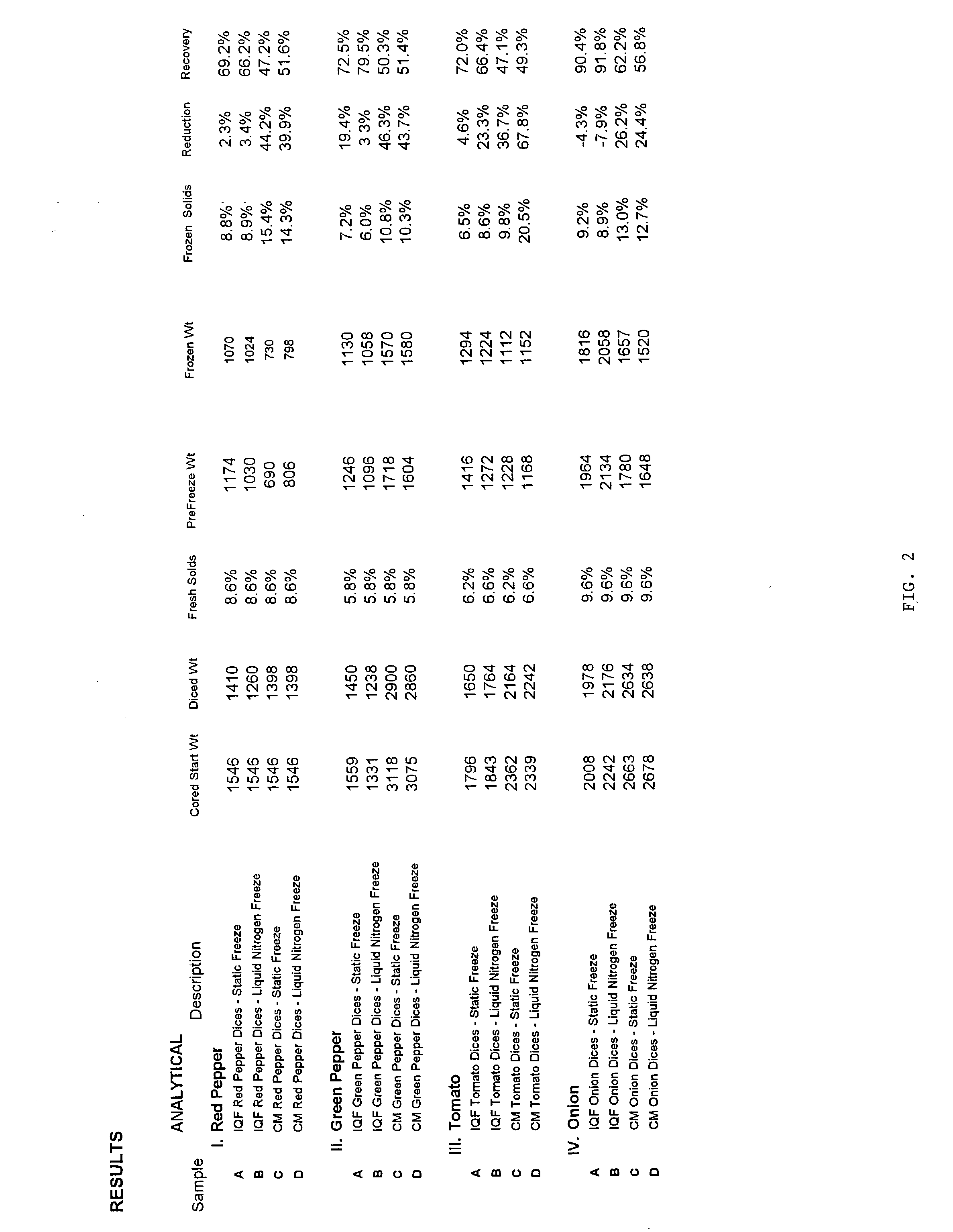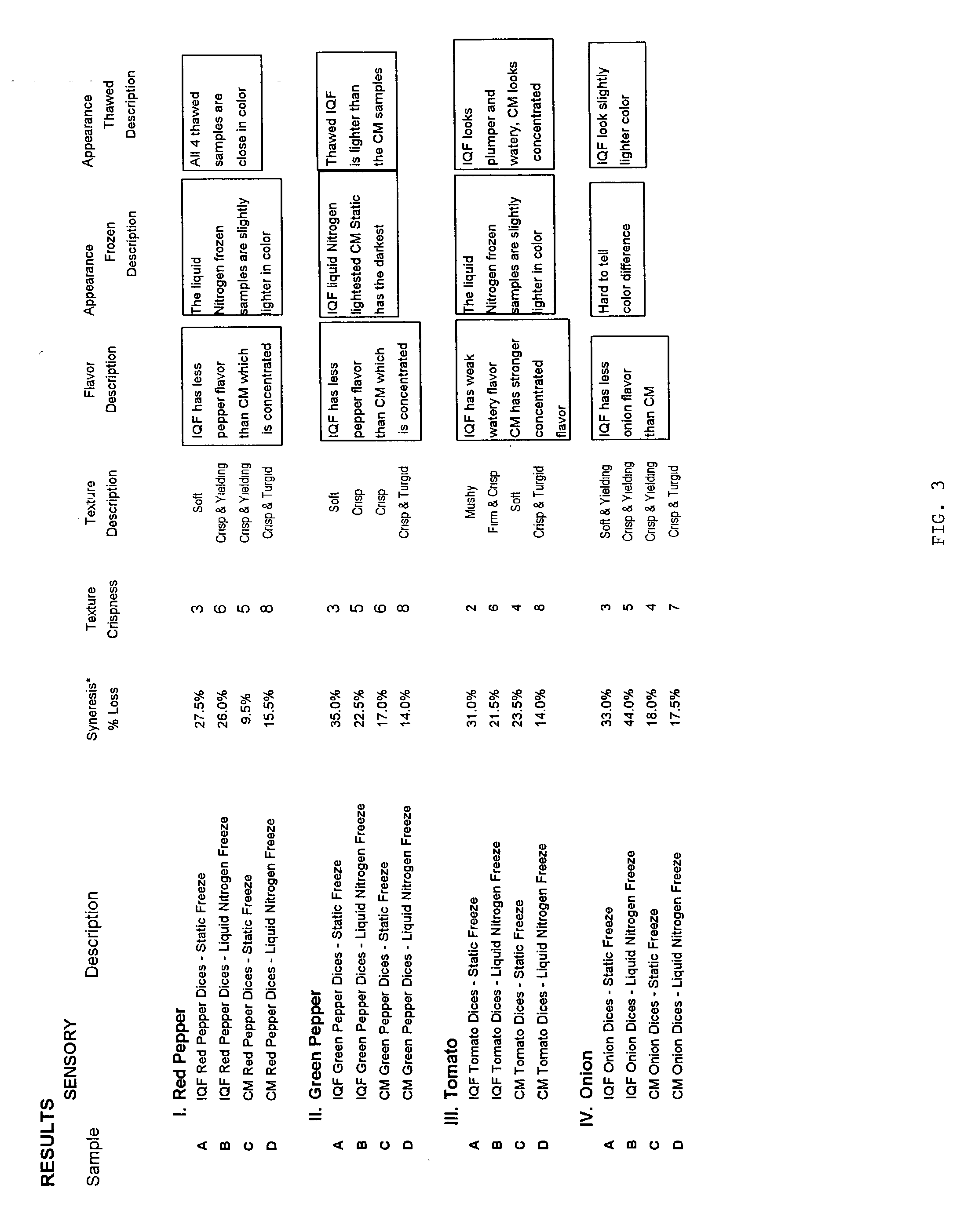Method for production of frozen vegetables or fruits
a technology for vegetables and fruits, applied in the field of production methods of frozen vegetables or fruits, can solve the problems of difficult to substitute fresh products with dried products, all three methods suffer from various problems, and the use of dried products is limited, so as to achieve superior crispness, less water leaching, and superior characteristics
- Summary
- Abstract
- Description
- Claims
- Application Information
AI Technical Summary
Benefits of technology
Problems solved by technology
Method used
Image
Examples
example 1
[0024] One hundred twenty pounds (120 lbs.) of fresh red bell peppers were obtained. The core, seeds, and stems were removed from the red bell peppers, and the peppers were then washed and inspected to ensure that they were of sufficient quality. After inspection, the peppers were diced into 3 / 8" by 3 / 8" pieces (100 pounds diced weight). It was determined that the peppers were comprised of approximately 10% solids and 90% water. The peppers were placed on a tray and air dried for 15 minutes at 250.degree. F., to produce a dried product that weighed 50 pounds, and was comprised of 20% solids.
[0025] The dried red peppers were then frozen cryogenically. A cryogenic freezing device manufactured by Air Products was used. The peppers were contacted, or frozen, in liquid nitrogen having a temperature of -321.degree. F., for less than one minute. The frozen peppers were then packaged and stored.
example 2
[0026] As shown in FIG. 1, tomatoes were treated with various processes and analyzed to determine the turgidity or crispness of the resulting tomatoes. As is seen, a fresh tomato has a texture crispness equal to 10. The tomatoes were divided into groups and then sliced and frozen. The groups were frozen with either a static or mechanical freezer, liquid nitrogen without any pre-treatment, a static freezer with calcium chloride added prior to freezing, or calcium chloride added to the tomatoes prior to freezing with liquid nitrogen. The texture crispness of the frozen / thawed tomatoes was then measured using the following device: TA.XT (plus) Texture Analyzer. As can be seen in FIG. 1, the tomato pre-treated with calcium chloride and liquid nitrogen had superior texture characteristics.
example 3
[0027] Samples of red bell pepper, green bell pepper, red Roma tomato, and yellow jumbo market onions were trimmed, washed, and diced to yield edible mesocarp and then divided into diced sub-samples. Approximately half of the sub-samples were processed into Instantly Quick Frozen (IQF) product. The other half was partially dried and processed as dehydro-frozen, or by controlled moisture (CM). Before freezing, the samples were further divided and frozen in either liquid nitrogen (fast freeze) or mechanically (slow freeze--static). After freezing, the products were compared for thawed moisture loss (syneresis) and for textural turgidity or crispness against fresh product.
[0028] Products were obtained and treated as listed below.
A. Red Pepper--IQF Red Pepper Dices--Static Freeze
[0029] 1. Select and core several large red peppers and weigh (approximately 2000 grams (gm);
[0030] 2. J-dice peppers 3 / 8".times.3 / 8";
[0031] 3. Blanch for 2 minutes in table blancher, then air cool;
[0032] 4. Tra...
PUM
 Login to View More
Login to View More Abstract
Description
Claims
Application Information
 Login to View More
Login to View More - R&D
- Intellectual Property
- Life Sciences
- Materials
- Tech Scout
- Unparalleled Data Quality
- Higher Quality Content
- 60% Fewer Hallucinations
Browse by: Latest US Patents, China's latest patents, Technical Efficacy Thesaurus, Application Domain, Technology Topic, Popular Technical Reports.
© 2025 PatSnap. All rights reserved.Legal|Privacy policy|Modern Slavery Act Transparency Statement|Sitemap|About US| Contact US: help@patsnap.com



